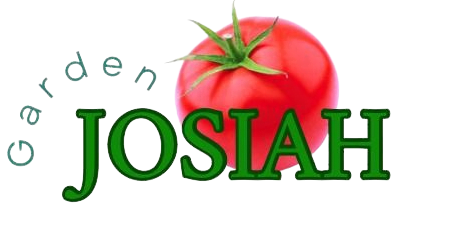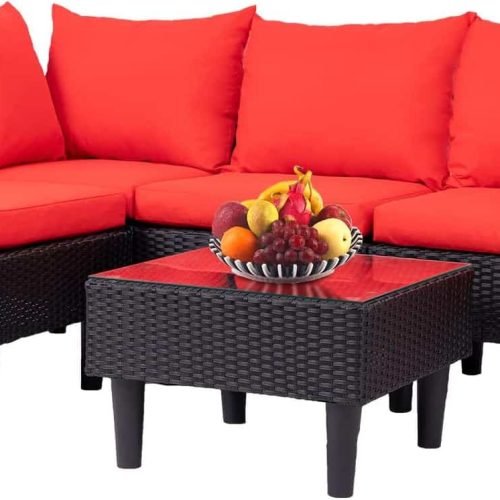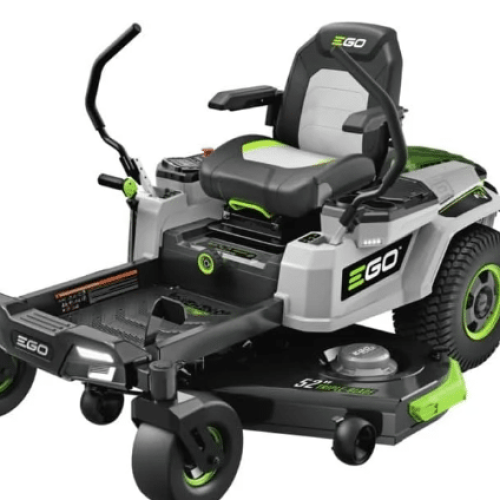Did you know the best soil for veggies is a mix of sand, silt, and a bit of clay1? This fact shows how key it is to know your soil when growing veggies at home. This guide will help you plan, prepare, and care for your garden. We’ll cover everything from the start to the end of your harvest.
We’ll teach you how to pick the best spot and veggies for your garden. You’ll learn about planting and keeping pests away. With the right info and effort, you’ll enjoy fresh, tasty produce from your garden.
Key Takeaways
- The ideal soil for most vegetables is a loamy blend of sand, silt, and minimal clay.
- Most vegetables require about six hours of sunlight per day for optimal growth and production.
- Raised garden beds provide better control over soil quality and help protect plants from animals and erosion.
- Succession planting can boost a garden’s overall yield by growing multiple crops in the same space.
- Knowing the length of your growing season and days to maturity for different vegetables is crucial for effective planning.
Planning Your Home Gardening
Before you start planting, it’s crucial to plan your home garden. Begin by figuring out your goals. Are you looking to supp
lement your grocery needs, become more self-sufficient, or share your bounty with others? This will help you decide which vegetables to focus on2.
Next, choose the right location for your garden. Make sure it has enough sunlight, good drainage, and easy water access. Think about the size of your space and pick vegetables that will do well there3. Some vegetables, like carrots and lettuces, do best when directly seeded into the bed3.
Selecting Vegetables and Varieties
Finally, research different vegetable varieties. Choose ones that fit your growing conditions and taste preferences3. Seed packets and plant starts give info on growing seasons and climate needs. A free garden planting chart can help plan your planting each year2.
“Having a gardening book or journal to document planting, growth, and harvest yields is recommended. Documentation helps in adjusting growing conditions or selecting different plant varieties for better results.”2
When starting seeds, consider the pros and cons. It’s cost-effective and offers a wide variety, but it’s time-consuming and requires research. Starts save time but are more expensive and have fewer options3.
Planning your home garden is key to a successful harvest. By aligning your goals, choosing the right location and size, and picking the best vegetables and varieties, you’ll have a thriving garden23.
Preparing the Soil and Garden Beds
Healthy soil is key to a great vegetable garden. First, test your soil for pH, nutrients, and drainage4. If it’s lacking, add compost or manure to improve it4.
Assessing Soil Quality and Drainage
Weeds can harm your soil and compete with your plants. Weeding can take from 10 minutes to hours4. Tools like Fiskars Weeder can make weeding faster4.
Checking your plants is important for a good garden. Fiskars PowerGear2 pruners help cut mature plants well4. Adding compost and fertilizers is vital for a healthy garden4.
Compost twice a year helps your soil and plants4. Automated Garden Watering Systems before planting activates fertilizers and releases nutrients4.
Building Raised Garden Beds
Building raised beds is a good idea for better drainage and soil control5. They also help manage weeds5. The author has built many raised beds since 20135.
Any season is good for building raised beds, giving you flexibility5. Use materials like scrap wood and tin roofing to save money5.
Make sure the ground is flat and has good drainage before starting5. Avoid treated lumber for raised beds5.
You can buy raised beds from local stores, online, or have them custom-made5. Use landscape fabric or cardboard to stop weeds5. A mix of half topsoil and half compost is best for drainage and nutrients5.
Peat moss helps if the topsoil is too dense5. Fill the bed with cardboard or newspaper for weed control and aeration5. Use Fiskars Hand Trowel for planting to get depth and spacing right4.
Plant seedlings carefully, and follow seed packet instructions for direct sowing4. Different seed sizes need different planting methods4. Fertilize after the true set of leaves emerges for best growth4.
A Step-by-Step Guide to Home Gardening: From Planning to Harvest
Once your garden beds are ready, it’s time to plant. Use companion planting to place plants for better growth and to keep pests away6. Also, rotate your crops to keep the soil healthy and prevent diseases6.
Companion Planting and Crop Rotation
Companion planting means growing different plants together for their mutual benefit7. It can make your garden more productive, keep pests away, and attract helpful insects7. By choosing the right plants to grow together, you can create a balanced and thriving garden.
Crop rotation is key in home gardening. It helps keep the soil fertile and prevents pests and diseases6. This keeps your plants healthy and makes your garden diverse and strong.
Succession Planting for Continuous Harvests
To have a steady supply of fresh produce, try succession planting6. This means planting seeds or seedlings at different times. It lets you harvest continuously and enjoy fresh veggies all season6.
Using companion planting, crop rotation, and succession planting can make your garden very productive6. These methods keep the soil healthy, prevent pests, and give you a constant supply of fresh produce6.
| Technique | Benefits |
|---|---|
| Companion Planting |
|
| Crop Rotation |
|
| Succession Planting |
|
“Integrating companion planting, crop rotation, and succession planting into your home garden can lead to a bountiful and sustainable harvest.”
By using these techniques, you can make your garden productive and eco-friendly. It will give you a steady supply of fresh, homegrown food6.
Planting and Growing Your Vegetables
When it’s time to plant your vegetables, you have two main choices: direct sowing or transplanting8. Direct sowing is simpler and cheaper, perfect for fast-growing veggies like radishes and lettuce8. On the other hand, transplanting gives you a head start for slower-growing plants like tomatoes and peppers.
Direct Sowing vs. Transplanting
The choice between direct sowing and transplanting depends on the vegetable, your garden, and your preference8. Most veggies need 6 to 8 hours of sunlight daily8. A 10′ x 10′ garden is good for beginners, while a 4′ x 4′ or 4′ x 8′ raised bed works for smaller spaces8. For a family of four, a 12′ x 24′ garden is ideal.
Watering, Fertilizing, and Pest Management
After planting, it’s crucial to water, fertilize, and manage pests properly8. The top 10 easiest veggies for beginners include lettuce, green beans, and tomatoes8. Using high-quality seeds saves time and money8. Planting at different times helps manage harvests8. An online garden planner can help organize your garden.
9 Families save a lot by growing their own veggies, spending $70 but getting $600 worth of produce9. They grow produce worth eight times what they spend on gardening.
By following the best practices for growing, you can ensure a successful harvest in your home garden.
Harvesting and Maintaining Your Garden
When your vegetables are ready, it’s time to harvest. Learn the right time and method for each crop to get the best taste and quality10. Harvesting season changes by area, with August being a key month for preserving and picking10. It’s important to plan your harvest to fit your schedule, especially around vacations10.
Seed packets help by showing “days to maturity.” This helps you plan planting and harvesting times without conflicts with vacations10. Keep an eye on your vegetables to avoid them getting too big and losing flavor.
To keep your garden in top shape, weed, mulch, and support tall plants11. Choose a spot that gets at least eight hours of sun, is near water, and has good soil11. Watering right is key, aiming for one to three times a week in summer11.
Preventing weeds is crucial. A three- to four-inch layer of organic mulch can help keep weeds away.
Think about extending your growing season with row covers or cold frames10. Quick pickling is a great way to preserve small amounts of veggies without big canning gear10. But, be aware of canning lid shortages, affecting gardeners’ supplies11.
The University of California Master Gardener Program helps with harvesting at the right time for the best taste11. They offer advice on soil, fertilizing, and more in over 50 California counties.
Remember to preserve excess produce through canning, freezing, or drying. This way, you can enjoy your hard work even after the season ends.
Conclusion
Starting a home vegetable garden needs planning and effort, but it’s rewarding12. Follow this guide to grow a garden that gives you fresh, tasty food12. Keep learning and trying new things to fit your garden and taste12. Soon, you’ll enjoy the fresh produce from your garden.
As you garden, look for gardening resources like online forums and local services12. They offer tips and advice to improve your gardening skills12. Whether you’re new or experienced, there’s always more to learn in gardening.
Face challenges, celebrate wins, and enjoy the food from your garden12. Your garden is a special place that feeds your body and soul12. Happy gardening!
FAQ
What are the key things to consider when planning a home vegetable garden?
When planning your garden, first figure out what you want to achieve. Then, pick the best spot and size for your garden. Lastly, choose the vegetables and varieties that fit your climate and taste.
How do I prepare the soil and garden beds for successful vegetable growing?
Start by checking your soil’s quality. Add organic matter if it’s lacking. Building raised beds can also help create a perfect spot for your veggies.
What are some techniques for maximizing the productivity and health of my vegetable garden?
Try companion planting and crop rotation to keep your garden healthy. Succession planting also helps ensure a steady supply of fresh veggies all season.
How do I decide whether to direct sow seeds or transplant seedlings?
Deciding between direct sowing and transplanting depends on the vegetable and your garden. Each method has its own advantages.
What are the essential steps for caring for my vegetable plants throughout the growing season?
Watering, fertilizing, and managing pests are key to a healthy garden. These steps help your plants grow strong and give you a great harvest.
When and how should I harvest my vegetables for the best quality and flavor?
Knowing when and how to harvest each vegetable is crucial. It ensures your produce is fresh and tastes great.
How can I extend my growing season and preserve any excess produce?
Use row covers and cold frames to extend your growing season. Preserving your harvest through canning, freezing, or drying also lets you enjoy your garden’s bounty all year.
Source Links
- How to Start Your Own Home Vegetable Garden — A Step-by-Step Guide
- How to Plan Your Best Garden & Harvest for a Year’s Worth of Food
- How to Map, Plan & Plant Your Vegetable Garden – Christine Covino
- How To Prepare An Old Garden Bed For New Plants – Black Girls With Gardens
- How to Start a Raised Bed Vegetable Garden for Beginners
- Beginner’s Guide to Creating a Vegetable Garden: Tips, Tricks, and Benefits
- Vegetable Gardening | National Agricultural Library
- Vegetable Gardening for Beginners: The Complete Guide
- How to Plant a Vegetable Garden in 10 Steps
- How to Manage Your Garden Harvest (Without Losing Your Mind) • The Prairie Homestead
- Simple steps for preparing, caring for and harvesting a vegetable garden
- How to Plan a Vegetable Garden: A Step-by-Step Guide






